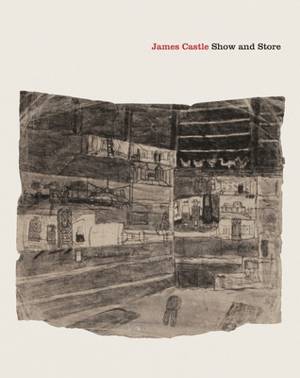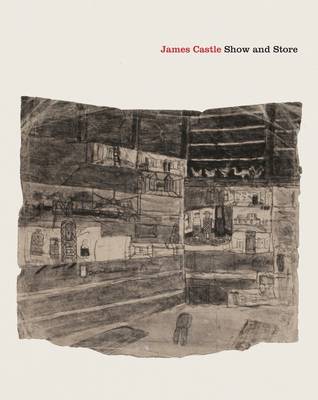
- Retrait gratuit dans votre magasin Club
- 7.000.000 titres dans notre catalogue
- Payer en toute sécurité
- Toujours un magasin près de chez vous
- Retrait gratuit dans votre magasin Club
- 7.000.0000 titres dans notre catalogue
- Payer en toute sécurité
- Toujours un magasin près de chez vous
James Castle: Show and Store
Show and Store
Briony Fer, Zoe Leonard, Suzanne Hudson
Livre relié | Anglais
55,95 €
+ 111 points
Description
For more than six decades, James Castle (1899-1977) dedicated himself virtually full-time to the activity of making art, producing a vast and accomplished body of work, much of which he managed to preserve. Growing up in rural Idaho, Castle devised his own art materials and techniques, making ink for drawing by moistening soot from the family stove with his own saliva and using discarded paper and other materials. In the 1950s, through the efforts of family members, Castle's work came to the attention of the local art community, and it began to be exhibited in Idaho and the Pacific Northwest, often under the rubric of outsider or self-taught art. Not until the late 1990s, however, did it appear in mainstream art circuits. Castle's work poses numerous challenges for the art historian. He was born profoundly deaf and never adopted conventional means of communication and thus never commented on his art. His works are neither titled nor dated, and it is difficult to trace an evolution or establish a chronology. As a result, previous scholarship has tended to focus on Castle's biography or on specific aspects of his oeuvre. James Castle: Show and Storetakes a different approach, looking at the entire scope of the artist's production--which included drawings, constructions made from found pieces of colored card and handmade books--and emphasizing the centrality of his display and storage methods to his practice. The essays in this volume also question the notion of Castle as an artist who worked in isolation from the world at large, examining his copying and reuse of images derived from printed media, including advertising and product packaging, and perhaps even television. Illustrated with more than 200 full-color reproductions, Show and Storeexamines drawings, handmade books, cardboard and paper constructions and collages.
Born profoundly deaf, James Castle (1899-1977) never fully learned to read or write, instead developing his own unique sign system and visual vocabulary. He won some local acclaim during his lifetime (including 1963 and 1976 exhibitions at the Boise Gallery of Art) but only achieved international recognition after his death in 1977.
Born profoundly deaf, James Castle (1899-1977) never fully learned to read or write, instead developing his own unique sign system and visual vocabulary. He won some local acclaim during his lifetime (including 1963 and 1976 exhibitions at the Boise Gallery of Art) but only achieved international recognition after his death in 1977.
Spécifications
Parties prenantes
- Auteur(s) :
- Editeur:
Contenu
- Nombre de pages :
- 224
- Langue:
- Anglais
Caractéristiques
- EAN:
- 9781935202707
- Date de parution :
- 31-10-11
- Format:
- Livre relié
- Format numérique:
- Genaaid
- Dimensions :
- 234 mm x 287 mm
- Poids :
- 1406 g

Les avis
Nous publions uniquement les avis qui respectent les conditions requises. Consultez nos conditions pour les avis.






